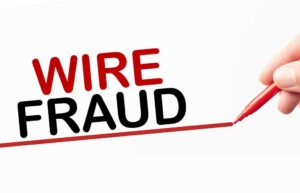The cash is filthy. In the hands of criminals, money laundering seems like an easy fix for ill-gotten gains. A few deposits and strategic moves could clean up untold sums of cash, making it ready to use for such dark ends as terrorism and nuclear weapons. Laundered cash could even point to corruption, to say nothing of the many other places unclean money may originate or end. Instead, knowledgeable bankers empowered by the Bank Secrecy Act of 1970 can stop laundering in its tracks. Money launderers will just have to learn the hard way. You already trust Bankers College to break down complex topics every banker should know. Now you can trust our BSA AML Professional Certification to help you get a handle on the simple ways to stem the tide on what the United Nations Office on Drugs and Crime estimates as yearly laundered sums of “$800 billion – $2 trillion in current US dollars.”
What is the Bank Secrecy Act?
Known also by the Currency and Foreign Transactions Reporting Act, the Bank Secrecy Act of 1970 was passed to establish clear guidelines for banks to help the US government combat money laundering. The act aimed to block criminals from using banks as conduits for money laundering. Organized crime, for example, might be involved in a wide variety of illicit activities. Tax evaders may be identified with suspicious activity reports, not required by the BSA, as might those seeking to fund terrorist or nuclear weapons activities.
How the Bank Secrecy Act Works
Money laundering is a federal offense, and the federal government is invested in stopping it. As a result, the BSA is not a static document but an evolving one, often amended and bolstered with new acts to support it. The Financial Crimes Enforcement Network, known as FinCEN, is entrusted by the U.S. Government with enforcing the Bank Secrecy Act.
Financial institutions and employees are both shielded by safe harbor measures if they report suspected illegal activity, and they have obligations to do so. Per BSA requirements, banks must file Currency Transaction Reports (CTRs) for paper cash transactions that exceed $10,000. Similarly, for some types of businesses, the banks should file a Form 8300 if the business receives over $10,000 in either a single or closely timed transaction.
Smaller sums are still subject to reporting if a banker notices a reason to suspect the sums are being used in relation to terrorism or other types of BSA violations. Suspicious Activity Reports (SAR) must be filed for sums greater than $5,000, and they can be filed at the banker’s discretion for smaller sums.
Any owner of a foreign bank account with $10,000 or more deposited must also file a Foreign Bank and Financial Account Report (FBAR), though banks should also register and file for their clients. All of these requirements and more are considered essential tools to combat money laundering in the United States.
Effects of the Bank Secrecy Act
As a bank, you’re good at records, policies, and procedures. That’s good because you’ll have to file accurate reports regularly to stay in compliance with the BSA. Per the Office of the Comptroller of the Currency, banks must “establish effective BSA compliance programs [and] … effective customer due diligence systems and monitoring programs, screen against Office of Foreign Assets Control (OFAC) and other government lists, establish an effective suspicious activity monitoring and reporting process, [and] develop risk-based anti-money laundering programs.”
Failure to comply with the BSA can result in costly fines and penalties, especially in the case of banks linked to laundering. Puerto Rico’s Bancrédito International Bank and Trust Corp. was fined $15 million in September of 2023 for its role in failing to monitor and report suspicious activity while a corruption scandal blazed.
Learn more about BSA / AML
Jump into our BSA/AML Professional Certification to learn more about this topic. Our self-paced series is designed to highlight critical knowledge for all frontline staff, whether bankers, auditors, or compliance professionals, with thorough, easy-to-understand explanations. You’ll benefit from well-planned sections in three significant areas. These areas cover foundational basics, intermediate topics, and advanced issues, building on each other for a well-rounded overview.
In foundational basics, we introduce the essentials of BSA/AML, compliance reporting, CTRs, and a BSA exam manual. In intermediate topics, we present issues such as operational issues for high-risk businesses, human trafficking, and resident and non-resident alien customers. In our advanced issues sections, you’ll gain familiarity with areas such as audit and risk compliance, elder exploitation, BSA model validation, and more.
Noggin Guru invites you to view the course curriculum for our certification and discover how your insight and expertise can deepen with our trusted, in-demand online learning tools.








